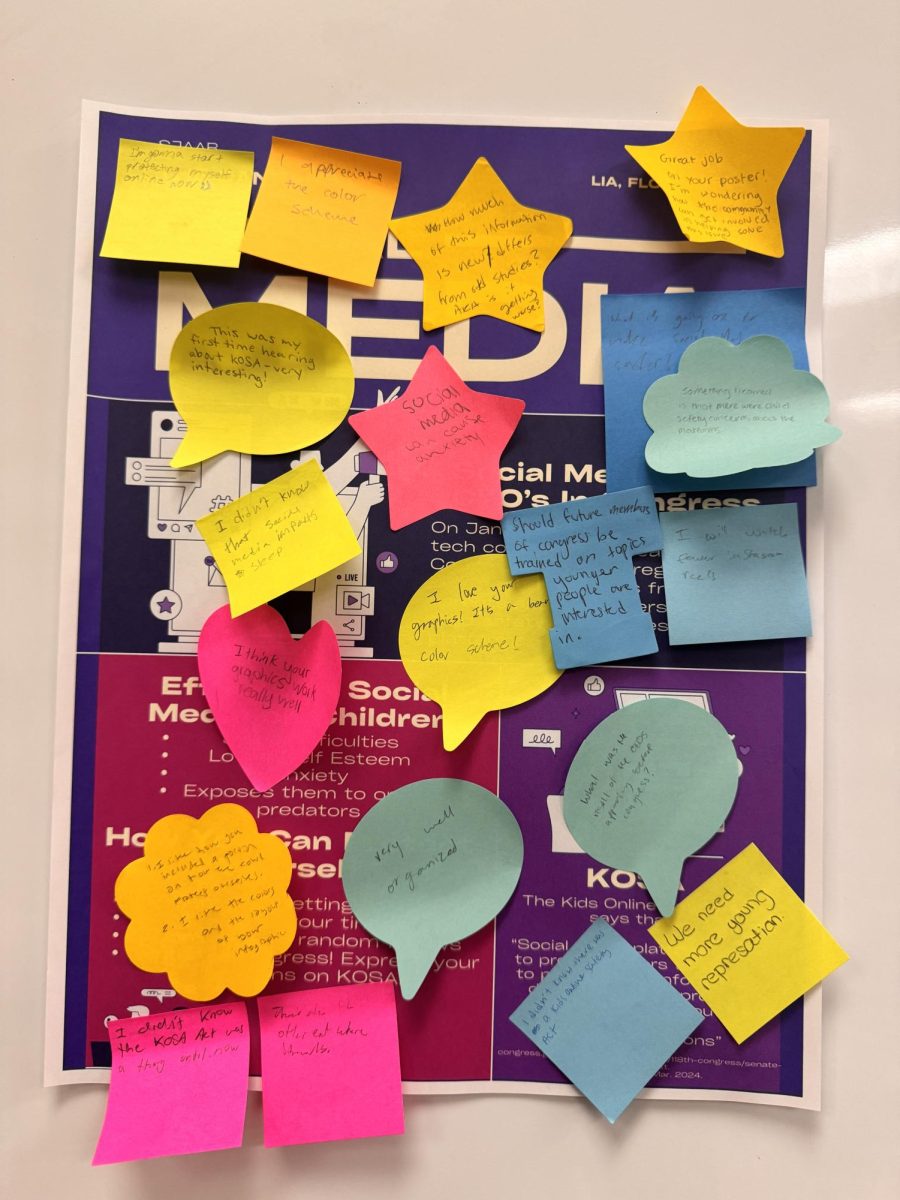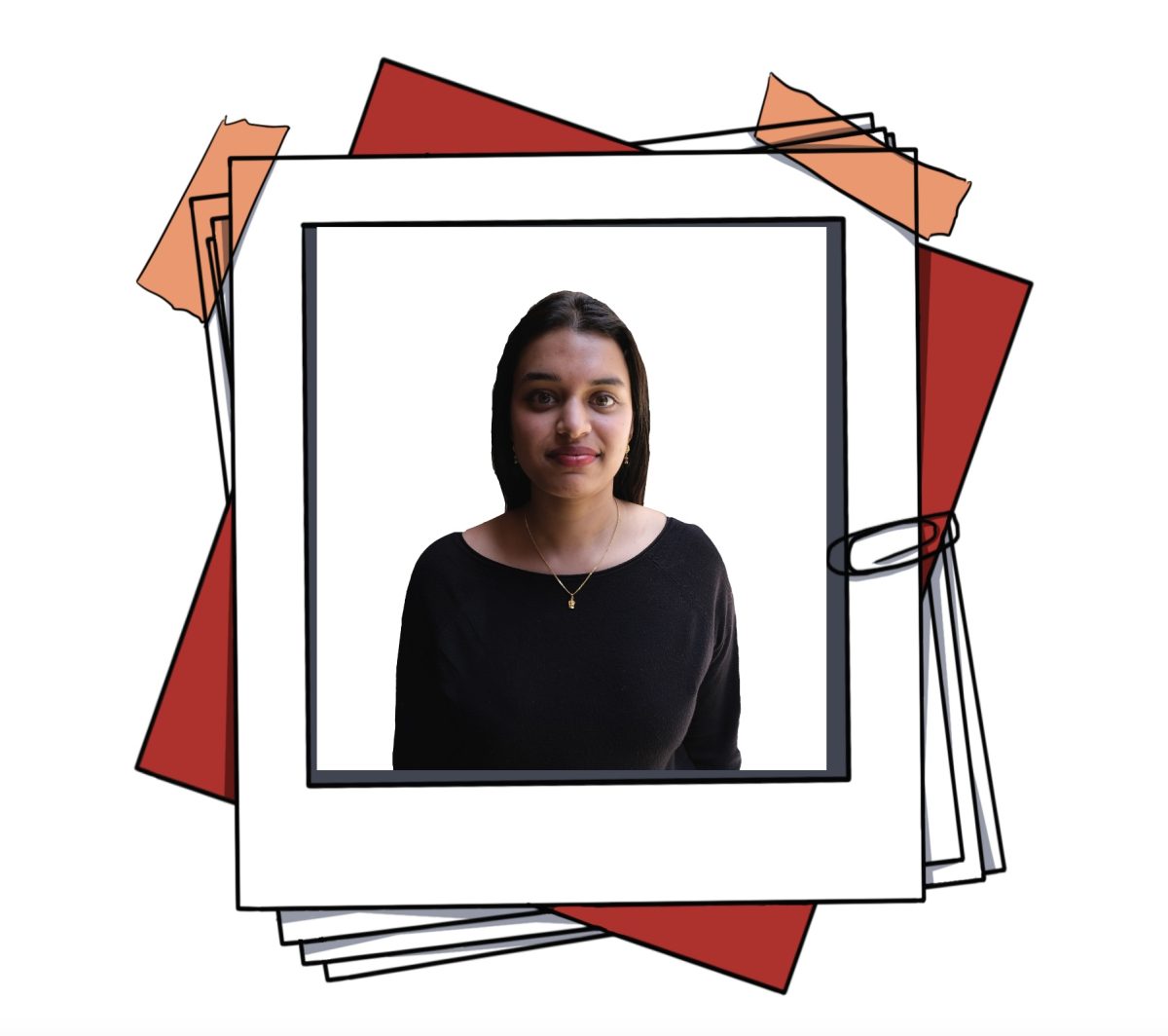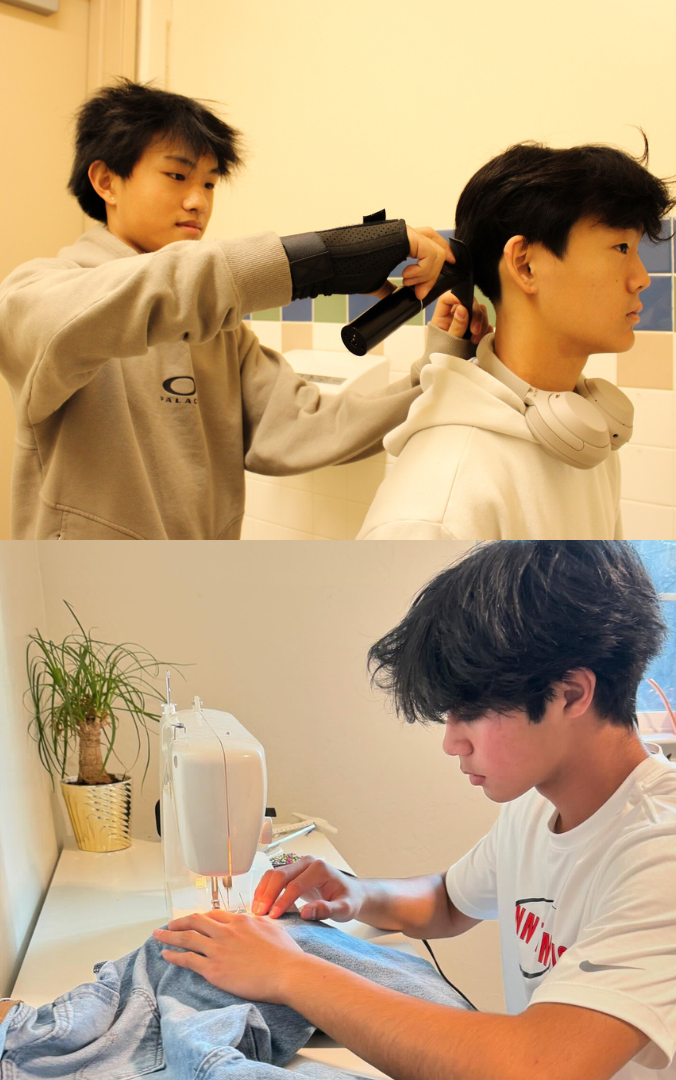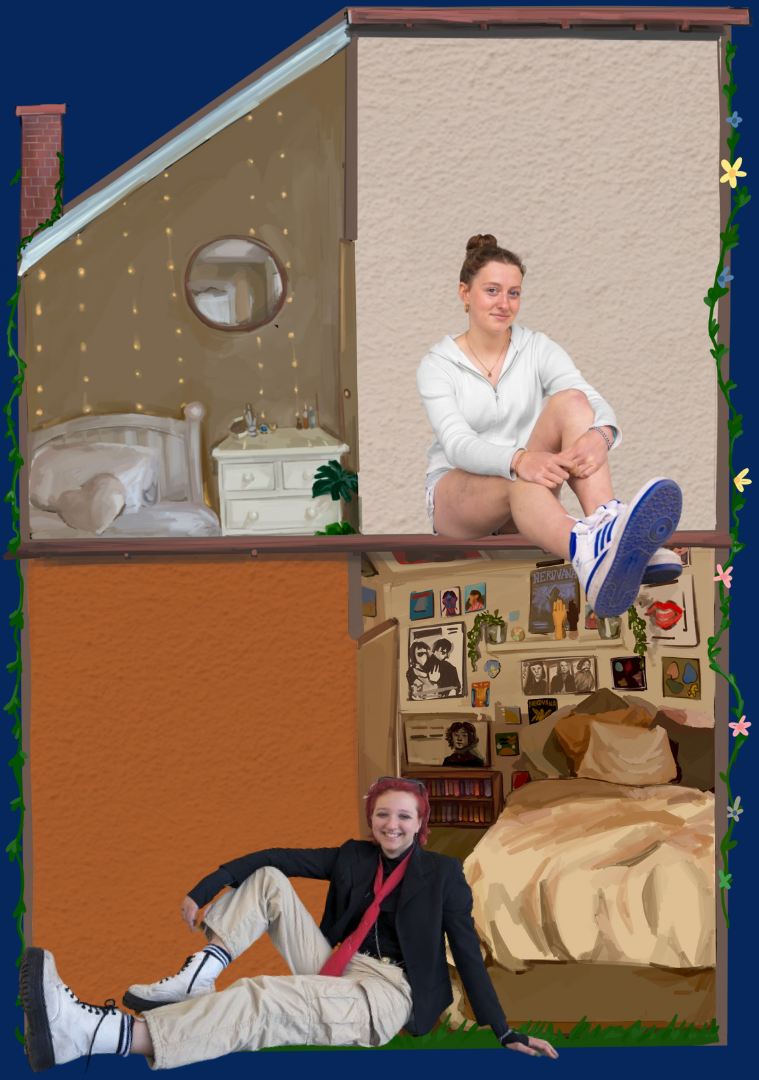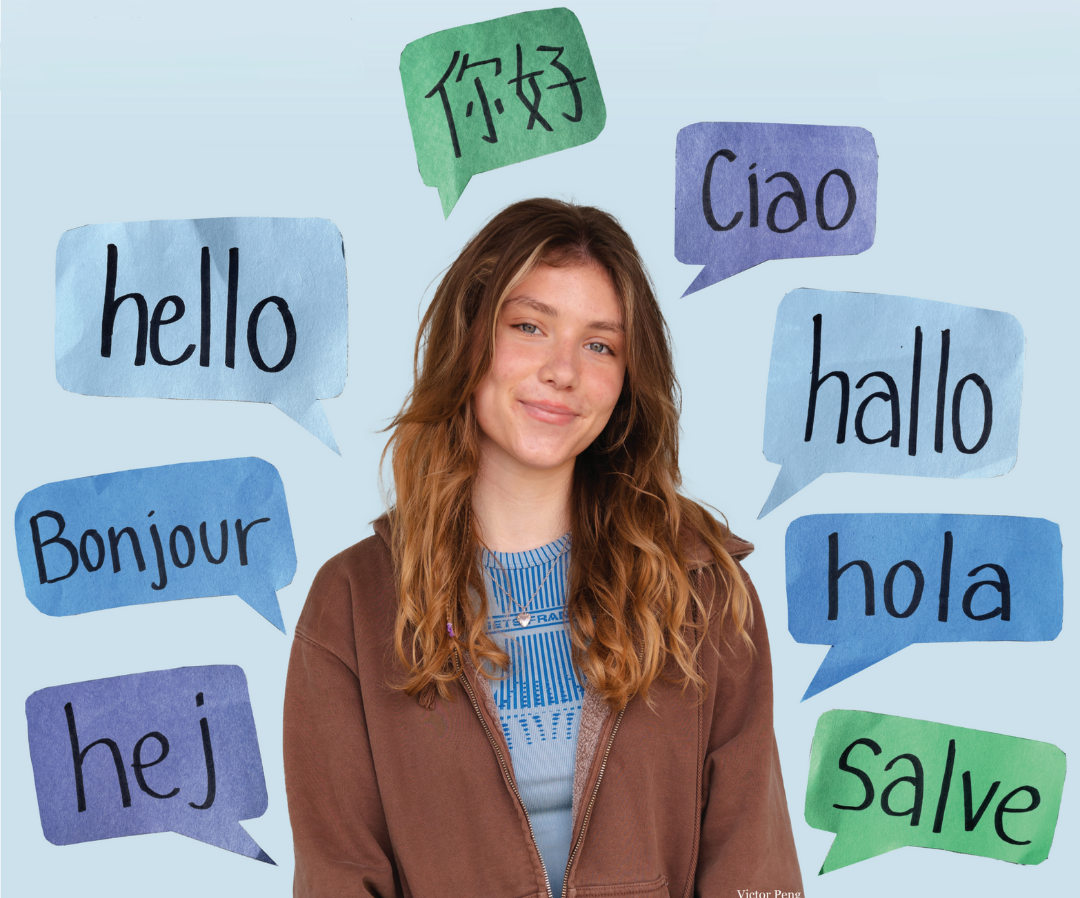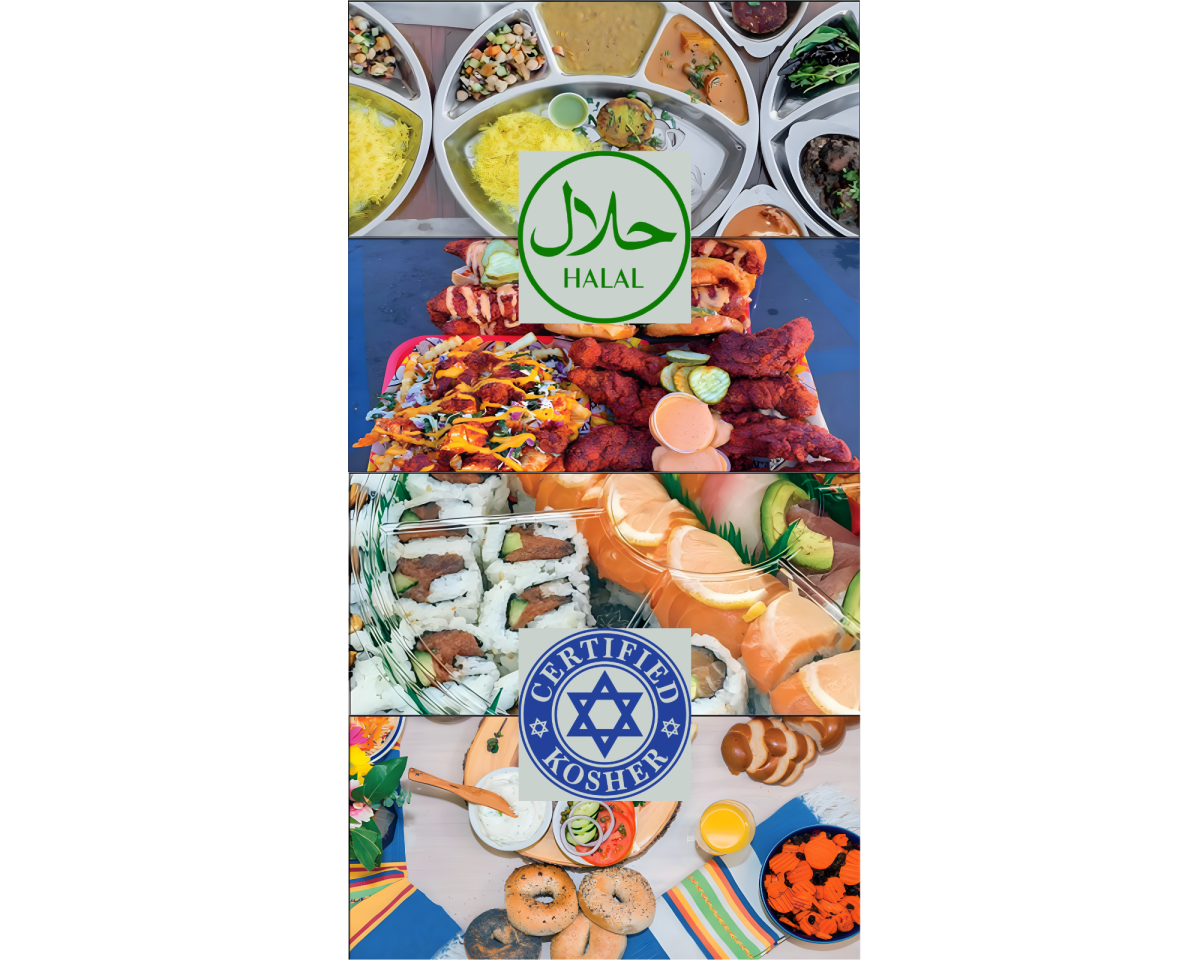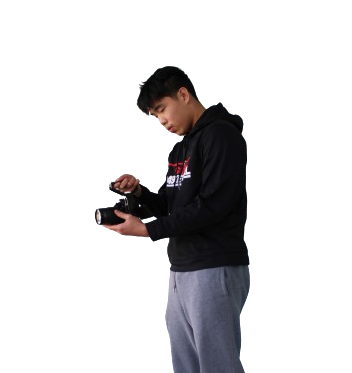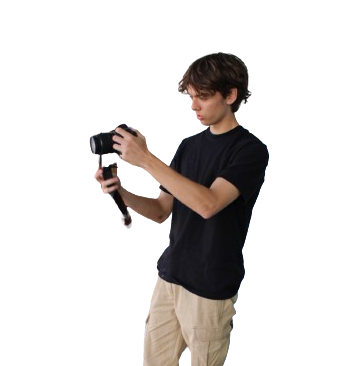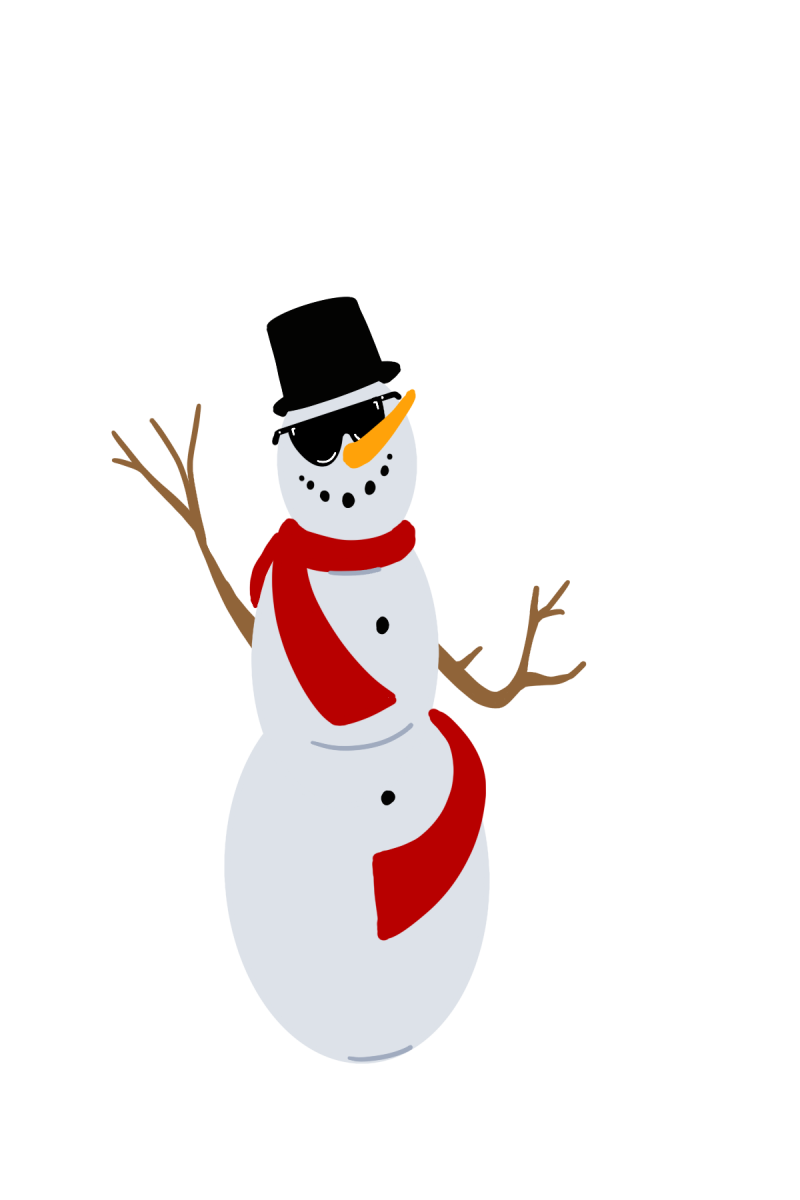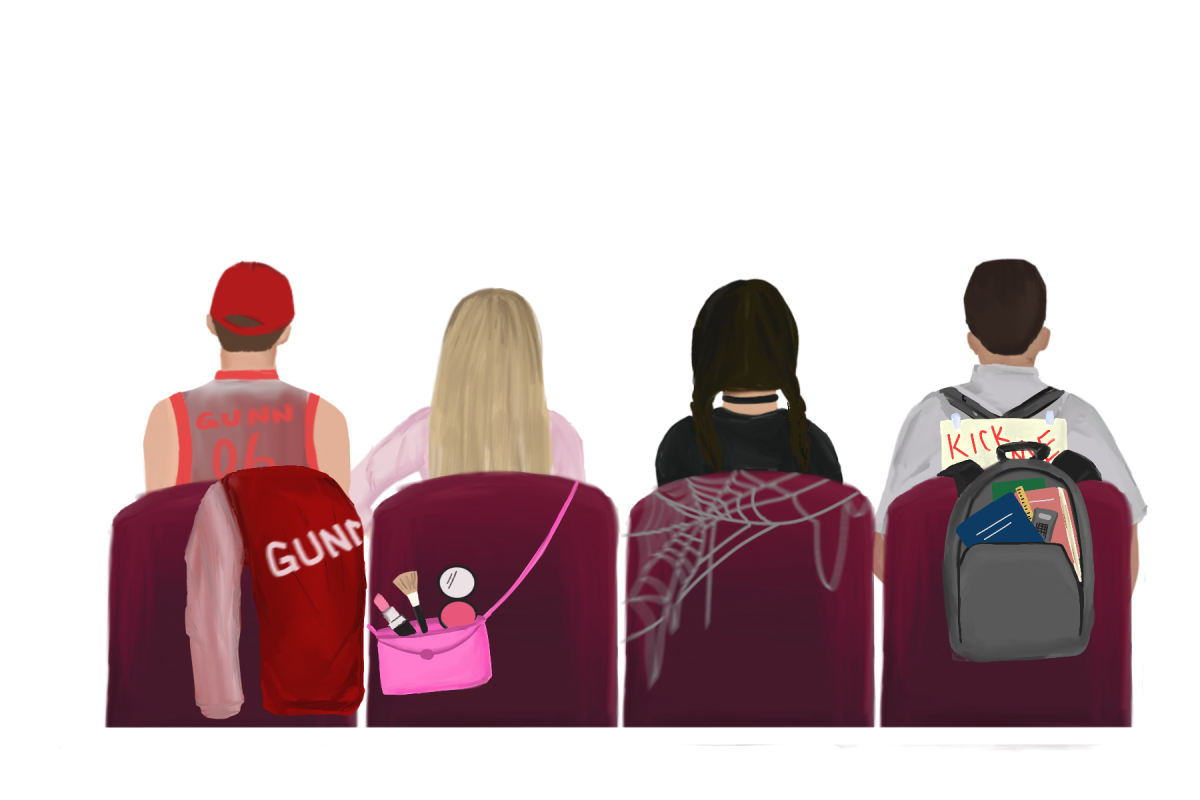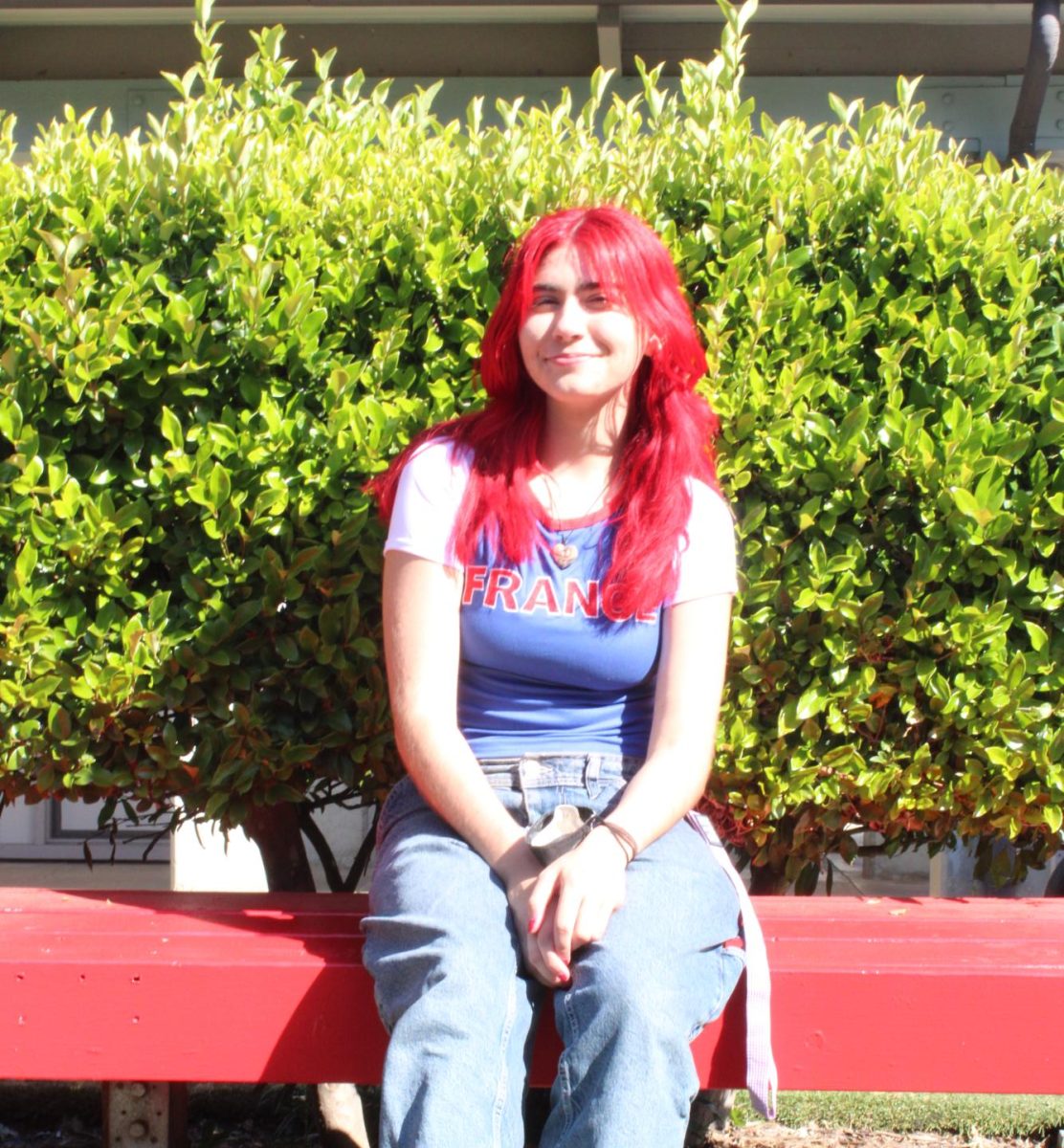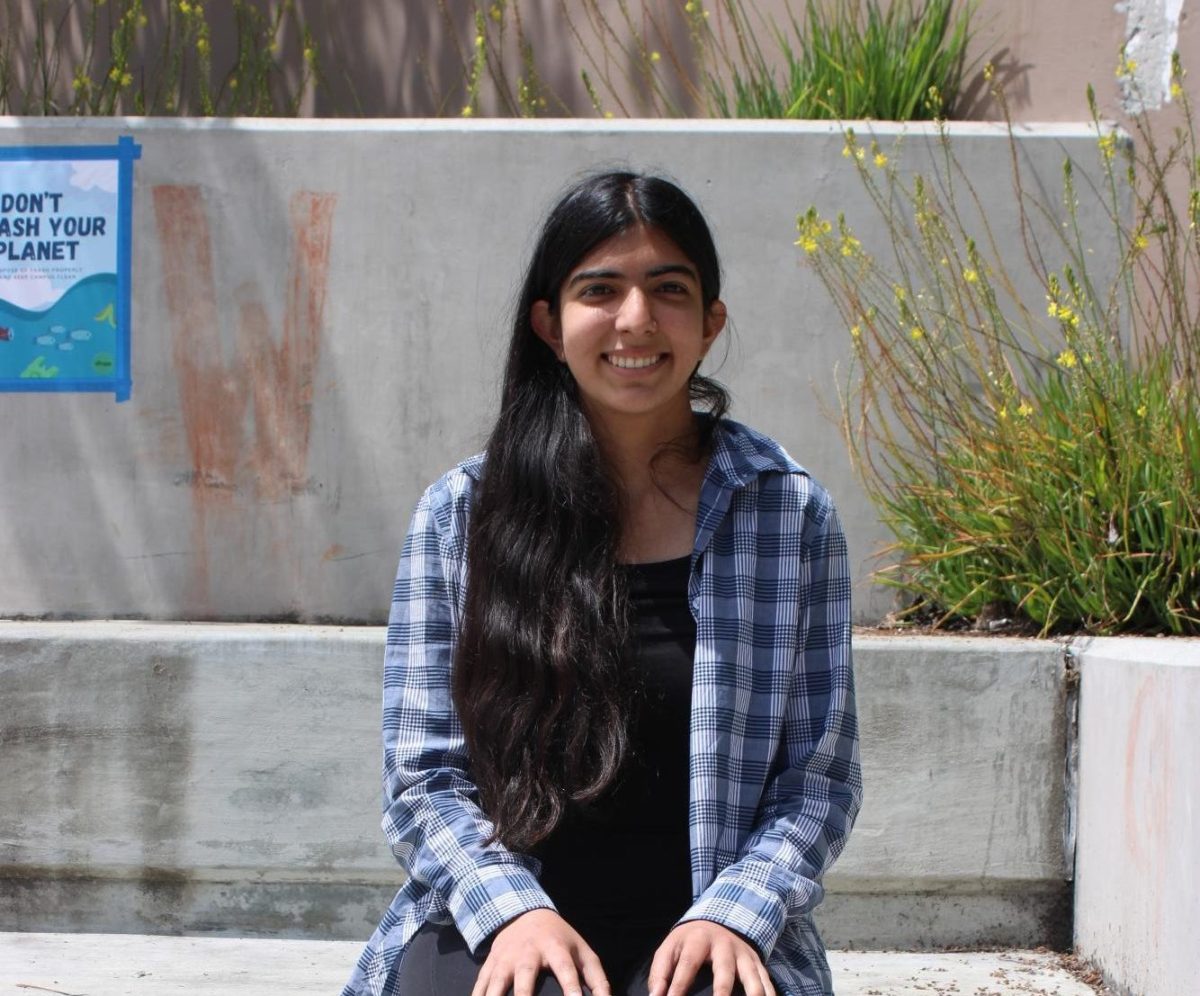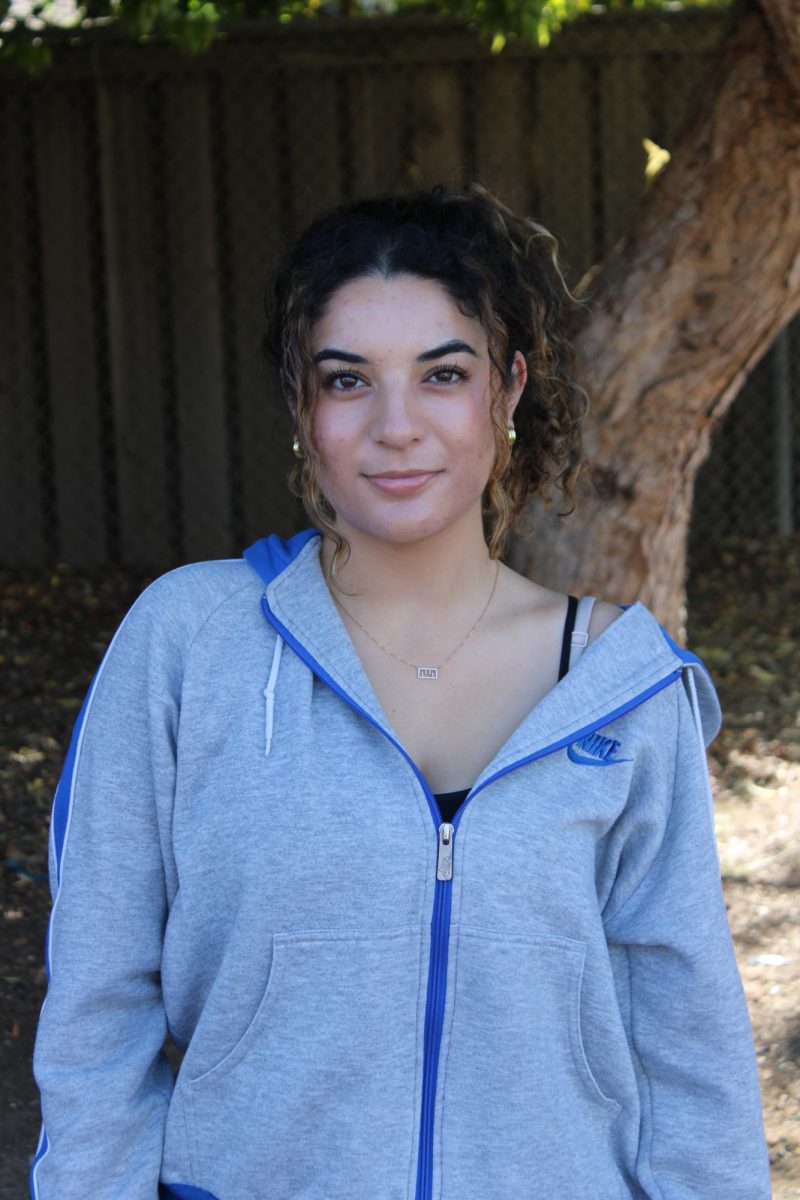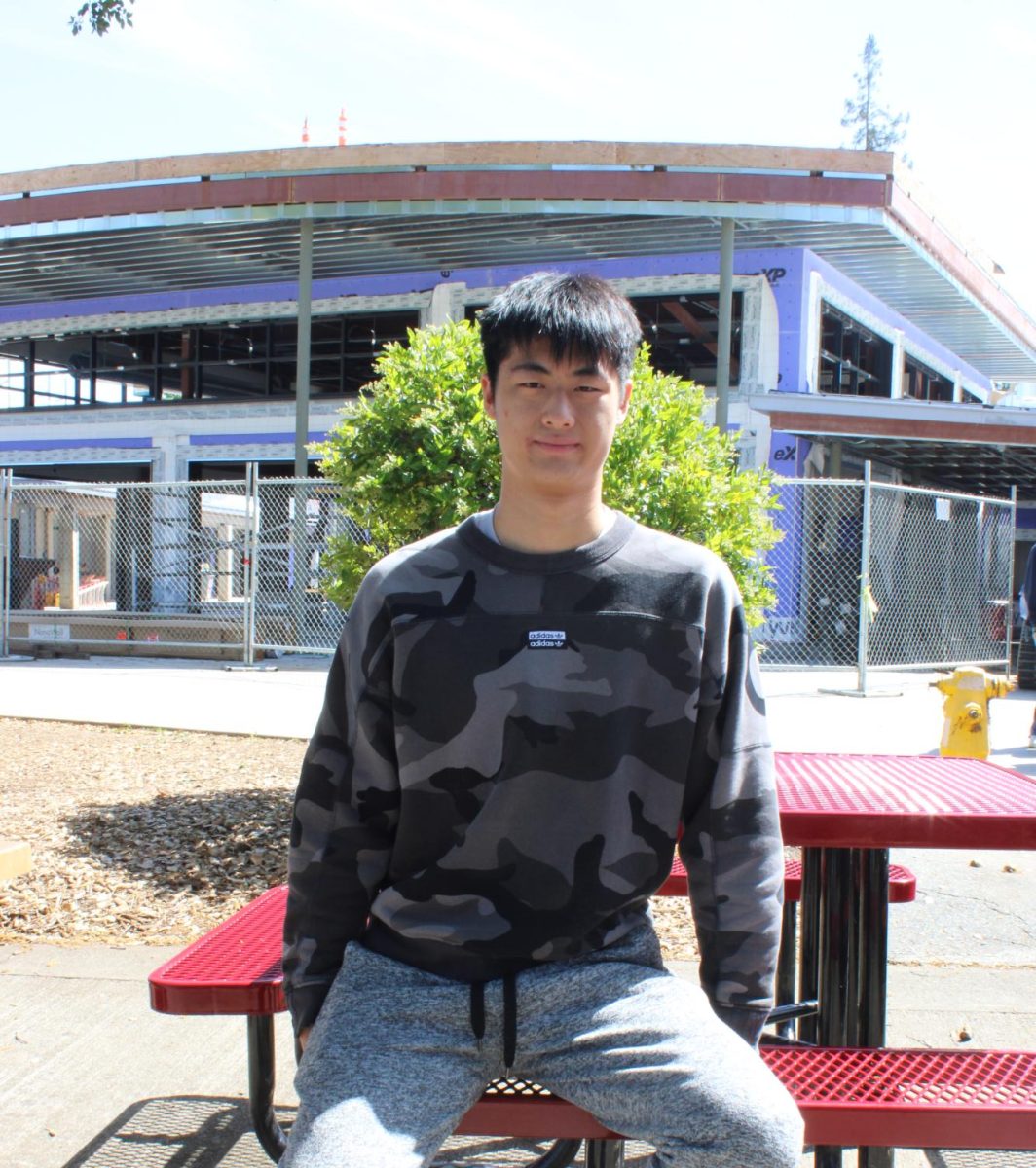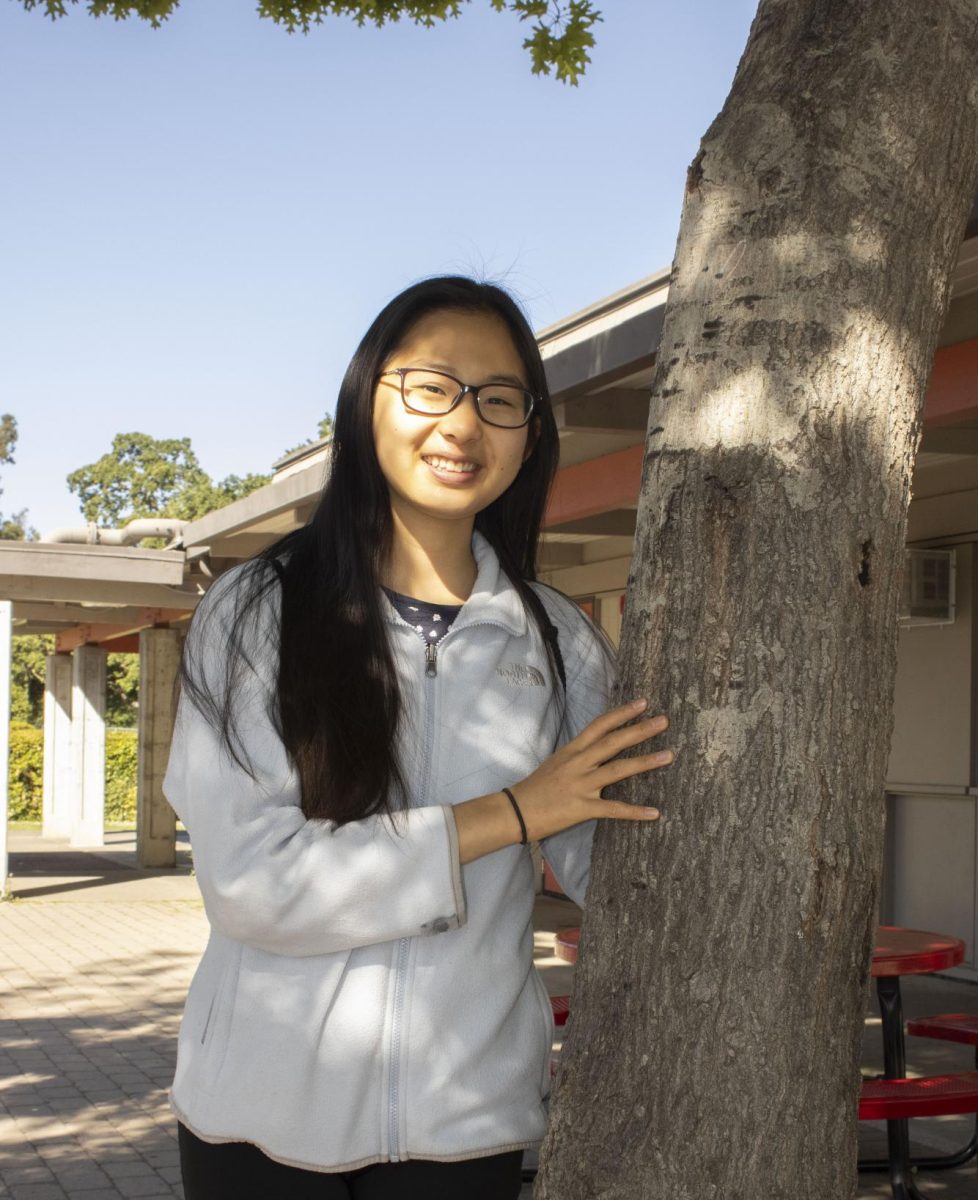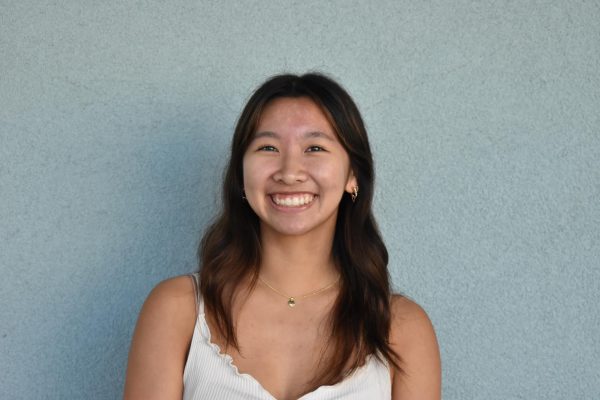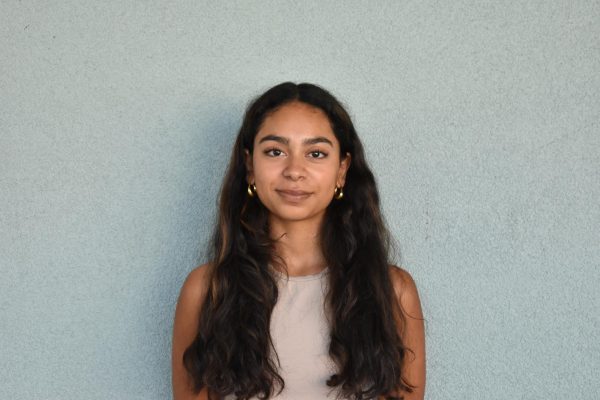What is the impact of screen time on children’s social-emotional abilities? How have regulatory changes in the food industry affected small businesses? Are Bay Area teachers receiving enough mental-health support? These are just a few of the questions that arise in Advanced Authentic Research, a yearlong course in which students pursue research on a topic of interest. From posing a research question to writing a literature review to collecting and analyzing data, the course takes students through all steps of the research process, culminating in a final research paper and presentation at Foothill College. Students in Gunn’s three-year Social Justice Pathway, which requires AAR as a part of its curriculum, conduct research with a social-action focus.
A key component of the course is mentorship: Each AAR class is assigned two to three mentors — ranging from district parents to local professors to business owners — who regularly check in on students’ progress. According to AAR teacher Rachael Kaci, this model of mentorship has evolved since the course’s development nine years ago.
“Most students, prior to Covid, were assigned to a mentor one-on-one, but we saw such a variance in how the students relied upon the mentors,” she said. “Now that the mentors come into the classroom, they have the opportunity to watch the progress throughout the year and the student growth.” Under these mentors, students learn critical research skills, such as professionalism and writing. Kaci appreciates how the course challenges students to strengthen their soft skills of time management, communication and adaptability.
“Every single year, every student runs into a hiccup,” she said. “It could be a major one — like last year, I had two students who completely pivoted second semester and redid their project. Or, it could be a minor one, like not having enough respondents on a survey.”
SCRAPP
Despite these challenges, AAR students finish the school year with newfound answers to their research questions or having made an impact on an aspect of their community.
For instance, while walking around campus, students might notice green and blue posters with “Don’t Trash Your Planet” in bolded text plastered on any empty wall.
These posters are part of the Sustainability Campaign to Raise Awareness of Plastic Pollution initiative, begun by Social Justice Pathway juniors Phoebe Mota-Judges, Floyd Neesen and Talya Schube this year. SCRAPP’s goal is to motivate Gunn students to clean up trash from school lunches.
“We just saw the problem was so bad,” Neesen said. “If you take a look at the senior and sophomore (quads after lunch), there’s so much (trash). If you’re walking by, you can’t not notice it.”
The group hopes to combat littering by raising awareness. As part of the sensibility campaign, they have created an Instagram account to post videos and infographics about the detriments of non-reusable plastic and the impact of trash on campus.
Although existing posters in each classroom highlight the different materials that go in compost, landfill and recycling, they don’t include all of the wrappings used by the school cafeteria.
“There are reminders to throw away your trash and waste sorting guides that include the (packaging) that is used in the cafeteria,” Neesen said. “The (existing posters) don’t have the things that they use to wrap sandwiches and burgers. We have those.”
Fueled by their determination to improve Gunn’s sustainability, the SCRAPP team has learned valuable skills, such as networking, adaptability and teamwork. According to Schube, there were challenges when working with a lot of people.
“Trying to work on other people’s time, as well as going through a lot of people, was difficult,” she said.
BuddyBonds
AAR projects also extend beyond Gunn’s boundaries. For instance, juniors Namya Kasturi, Samhita Krishnan and Lia O’Donovan have worked to combat elders’ loneliness in Palo Alto through pen pal assignments this year. In collaboration with Palo Alto Commons, a retirement community, they sent a sign-up form to the home’s residents and are currently waiting to hear back.
From the beginning of the brainstorming process, O’Donovan and her team knew their main goal was to build community.
(This project) taught me a lot about moving on and how to make a change in a community that isn’t sheltered by a class, because this is something we could have done outside of AAR.
— Junior Lia O’Donovan
“We wanted to create intergenerational events between the elderly population and teenagers, and we were hoping to branch out to other schools and care homes to work with,” she said.
For O’Donovan, this project stemmed from her desire to become closer to elderly family members.
“I live far away from my grandparents, so when I get to talk to them, it’s very special,” she said. “I know that I have older neighbors on my street and I feel very connected to them when I get to talk to them a lot. I wanted to form that bond for others.”
Although BuddyBonds originally wanted to organize student groups to go to retirement homes, they had to adapt their idea, as finding a retirement home willing to partner with them was much harder than expected.
“It’s taught me a lot about moving on and how to make a change in a community that isn’t sheltered by a class, because this is something we could have done outside of AAR,” she said. “I learned that it’s the real world.”
Staff mental health
AAR is more than hands-on work, however: Students must also write up their findings in a formal paper. As sophomore Alisa Sonehara begins drafting her research paper, she needs to cite information from other sources while still integrating her own ideas.
Luckily, she has the support of experienced mentors to help analyze and organize her data. She also uses generative artificial intelligence tools such as ChatGPT, which help check that her writing is clear, concise and, most importantly, accurate. With these resources, Sonehara has been able to delve into staff mental-health supports in PAUSD.
While Sonehara originally planned to research students’ mental health, she ultimately shifted her focus to staff, in light of district staffing shortages and new support initiatives following the pandemic.
“I wanted to see the type of support they are getting because I think there’s a lot of awareness and support for students right now, and there’s a lot more talk about it compared to educators,” she said. “I feel like educators deserve the same attention for mental health, because they matter a lot too.”
Sonehara was surprised to find that improving certain areas of mental health isn’t within the county specialist’s purview.
“For example, in the Healthy Kids Survey, if a teacher’s respondents are saying how they don’t have a good work environment, the mental health specialist isn’t really directed from the district to help improve that — she’s kind of just working on the overall view of the support for mental health,” she said. “That kind of surprised me because I feel like she could do a lot to help (those particular areas) as well.”
According to Kaci, this long-term, hands-on investigation makes AAR unique. With the wealth of professional resources and guidance, she recommends the course to anyone passionate about something and unable to find a class on campus that caters to their interests.
“You’re placed with a mentor or a manager and in a field that’s different from the traditional classroom and still get credits to put on your transcript, so that’s why I like (AAR),” she said. “Don’t shy away if you’re nervous about research — we can help anyone.”


